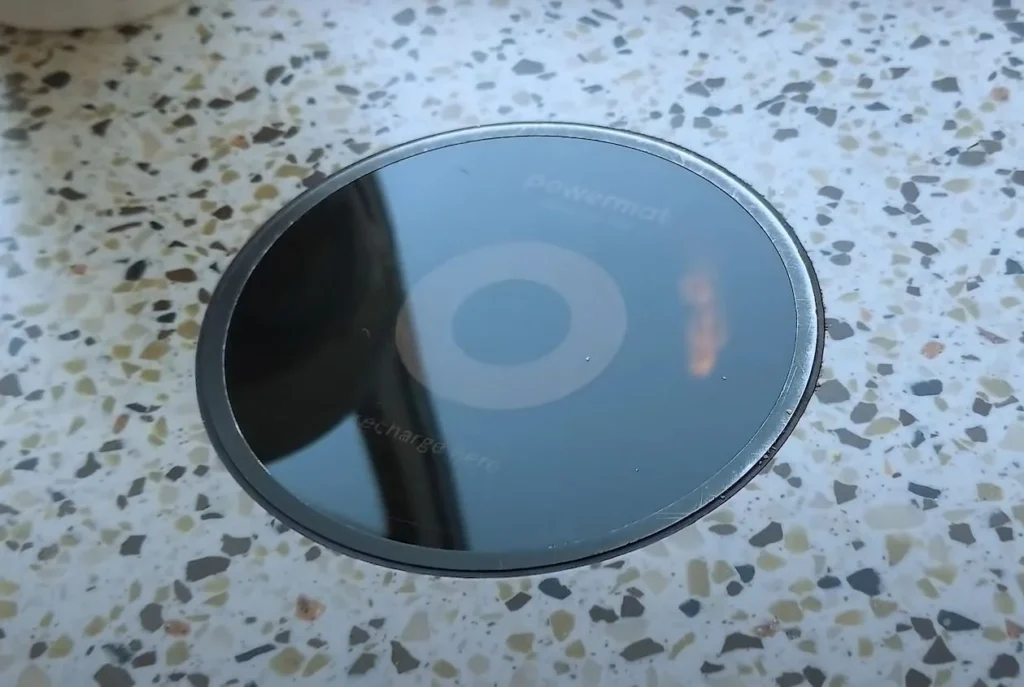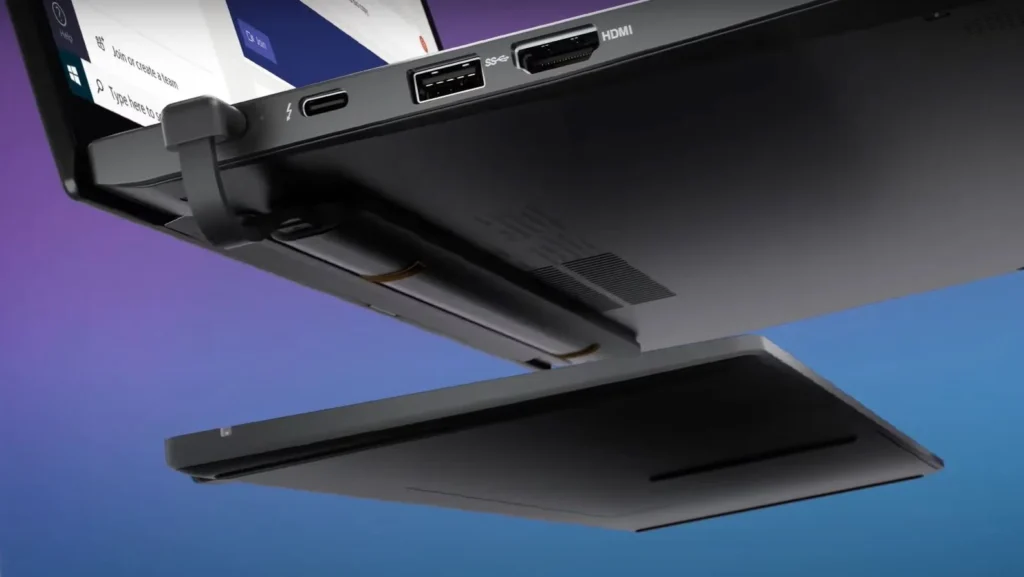Even in the absence of a fully practical solution like Qi for laptops, you can charge your laptop wirelessly with a few tricks.

It’s actually a paradox: laptops can access the internet while on the go, require little external power, and in certain situations, can even connect to a mobile network. However, a charging mat cannot be used to wirelessly charge them. Not quite, at least not yet. However, you do have a few more practical choices besides the charging plug.
The difficulty with wireless charging
Most wireless chargers operate through induction. Electromagnetism is used by coils in a charging mat to transmit energy to a metal receiver in the end device, which then transmits energy to the battery. A small amount of energy always “sticks” to the carriers in the form of heat on the way there. On a small surface, like a smartphone or smartwatch, this is not an issue. However, it is intended for larger surfaces, like notebooks, which would produce a lot of heat.
Hence, the aforementioned Energysquare system—which is also found in the Lenovo Go—operates devoid of induction. In this case, the charging mat’s individual sections transfer the current through the receiver’s contacts. Only the two regions that are in contact with one another are affected by this, creating an electrical line. As a result, the charging mat only warms up in two tiny spots, and its energy yield—93 percent, according to Energysquare—is higher.
Thus, it appears that the issue has been resolved. All manufacturers would need to do is install Energysquare’s power-by-contact technology in new appliances by licensing it. This is obviously also a financial concern. Additionally, when charging the notebook, it is always necessary to place a charging mat underneath it. Each user has to determine for herself whether she finds this to be less inconvenient than plugging in a charging cable.
Wireless iPad or Surface charging
Additionally, wireless solutions are available with the aid of a docking station. Unless you’re a Microsoft Surface Pro owner, that is. Through Surface Connect, the Kensington SD 7000 docking station establishes a wireless connection with a Surface Pro (generation 4 to 7+, but sadly not Surface Pro 8) and provides wireless charging through the contact.
Additionally, the intriguing Logitech Base solution is appropriate for a variety of iPad models if you wish to use an Apple iPad as a notebook. Through the Smart Connector, the docking station charges an iPad wirelessly.
The drawback of both the Kensington and Logitech solutions is that they are only compatible with older Surface and iPad models; the manufacturers have not yet released them for use with more recent models.
What is the substitute for docking stations?
Several of the earlier ideas for wireless laptop charging have since vanished from the market. These included the 2017 Dell Latitude 7285, a detachable notebook that could be wirelessly charged using a charging mat and had an attachable keyboard. Dell never came out with a replacement for the now-out-of-print item.
Apart from the Lenovo Go solution and magnetic charging plugs for retrofitting, what else is there? A suitable docking station with a little creativity. Such hubs and docking stations have a sizable market. To put it briefly, representatives can have cables or not. A free USB-C slot (or two) can be directly plugged into by certain docking stations. By doing this, you avoid needing a charging cable and the cabling of additional devices, like external monitors.
These consist of, for instance, the Icy docking stations that have one or two USB-C ports, which match the docking station that Apple MacBooks have. Along the same lines is the i-tec USB-C Metal docking station.
Lenovo Go USB-C wireless charging kit
In fact, you can simplify things for yourself: You can purchase the Lenovo Go USB-C Wireless Charging Kit to charge your laptop wirelessly. In this case, you set up your notebook by inserting a contact strip into the USB-C port. After that, you set this on a charging mat that is wired into the wall. Price point: less than 200 euros.

The Lenovo Go USB-C Wireless Charging Kit is limited to notebooks that support USB-PD (Power Delivery), or USB-C for charging. Additionally, Lenovo only warrants functionality for notebooks devoid of a touchscreen. Using a USB-C port continuously with these may cause touchscreen incompatibilities.
The obvious drawback is that the contact strip will raise your notebook by a few millimeters. Additionally, your laptop’s USB-C port is constantly in use. The kit should then be able to wirelessly charge any 13- or 14-inch laptop without a touchscreen, including Apple MacBooks, for up to 65 watts. Though it’s not quite as elegant as smartphone Qi charging, it sounds decent enough.
Still, the idea might have a future. It could also be built right into new notebooks by manufacturers, doing away with the need for a retrofit kit. The French company Energysquare is the source of the Power by Contact technology, which is licensed to notebook makers.
Retrofitting magnetic charging plug
This at least makes a slight progress toward wireless notebook charging. Recently, we wrote about how simple it is to add a magnetic charging plug to a notebook that is still without technology. Then, you won’t always need to fumble with the USB-C socket before docking the proper charging cable.
Such a MagSafe plug is included with the most recent Apple MacBook Pro 14 and 16. Despite the fact that it is regrettably not interchangeable with the MagSafe wireless charging plug found on iPhones and other smartphones.
Wireless laptop charging: Overview and future prospects
Will people start using wireless laptop charging? In summary, yes and no. Some more expensive notebooks will use technology like Power by Contact from Energysquare. It will never be as popular and easy to use as Qi for smartphones, though. Apple’s decision to bring back the MagSafe magnetic charging plug seems to be a more successful move. It is quite possible that comparable solutions will be developed soon by other PC manufacturers. As of right now, the Lenovo/Energysquare solution is your only choice if you want to charge your laptop wirelessly.